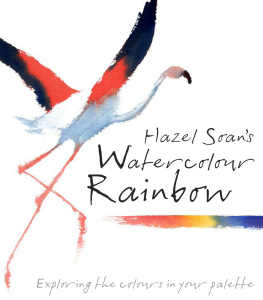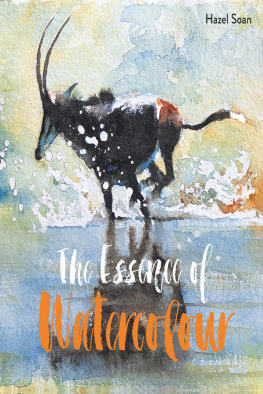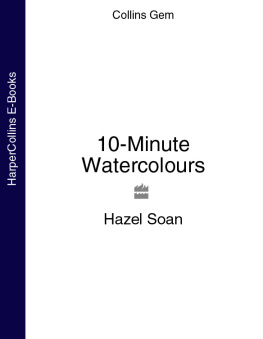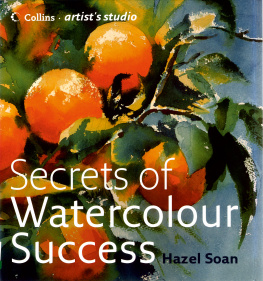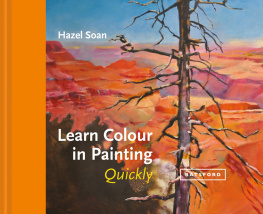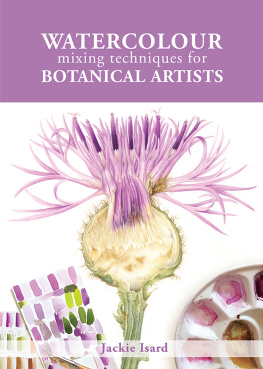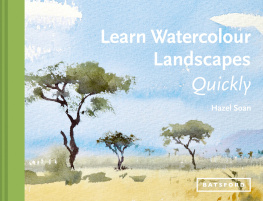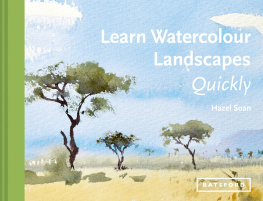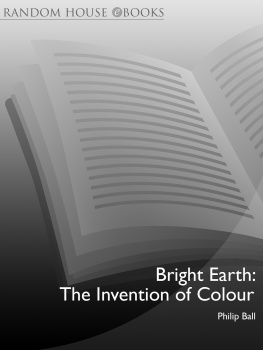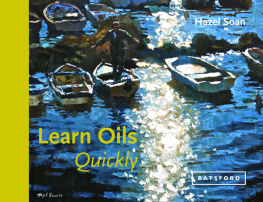Contents
Guide

Market Day
30.5 x 40.5cm (12 x 16in)

Boardwalk Caf, San Francisco
30.5 x 33cm (12 x 13in)
Dedication
To the God of Light and in memory of our beloved dog Yassen.
Acknowledgements
A big thank you to Cathy Gosling for believing in the idea and making it happen. To my sister Rosie for reading the first draft. To Lucy Smith, my editor, who has been delightful to work with and to Zo Anspach for the marvellous design: they both made the book look just as I hoped. To Diana Vowles for great text editing. To Madeleine Stone for photography. To Jennie Ryland for her encouragement. And to my husband and son who keep me ever on my toes.
Contents

Owning Nothing but the Wind
56 x 53.5cm (22 x 21in)
Introduction: The Rainbow in Your Palette

Colour is one of the chief attractions in a painting, both for the artist and the viewer, and the glorious pigments, transparent washes and vibrant hues of watercolour make it a particularly alluring medium. A vast array of colours and tones can be explored simply by adding water to pigment, producing paintings of breathtaking clarity and unique character.
This adds greatly to the thrill of painting, but there are times when the promise of radiant colour leads instead to disappointment. By unlocking the treasures of the palette, this book aims to broaden your knowledge so that you can approach choosing and mixing colour with confidence. Once you understand the way watercolour works and the individual characteristics of the rainbow of colours you will be equipped to show them at their captivating best.

The Wishing Well
25.5 x 30.5cm (10 x 12in)
Too Much of a Good Thing
In watercolour painting, everything depends on freshness. The white paper provides the light for luminous and transparent glazes of colour, and all you need to do is choose your paints, mix them and brush them into place.
That sounds simple, but how do you know which colours to choose? Most aspiring artists follow a list from an art book or buy a ready-made palette, but a collection of tubes and pans of lovely colours do not always translate into radiant watercolour paintings. In fact, watercolours are actually made more colourful by limiting the number of pigments, and it is how they are used in combination that is more relevant to the painter than individual hues. Although I carry as many as 22 different colours in my palette I use only 1216 on a regular basis, rarely more than six in any one painting and often only three.

San Diego Brunch
28 x 38cm (11 x 15in)
In this family beach scene, just three colours, Indian Yellow, Permanent Rose and Ultramarine (Green Shade), are mixed to make the reds, pinks, violets, blues and greens of the beachwear. A dash of Light Red is added into the flesh tones to give them more body.
How to Use this Book
In order to ensure that this book has practical application, it is limited to the colours included in the paintings. The first four chapters discuss the use of colour in painting, present an overview of watercolour pigments and explain how to mix and lay them to optimum effect. Thereafter the chapters are divided by hue and offer specific information on individual colours. Watercolour ranges offer plenty more than are discussed here, all wonderful, but trying to include them all would have made for a very large and potentially confusing book. However, I hope that after you have read Watercolour Rainbow you will try other colours too, matching their properties to the categories identified in this book warm and cool versions, transparent and opaque pigments and find the set that works best for you.
I use predominantly Winsor & Newton Artists Water Colour, so the names of the colours here are those used by that brand. Although many manufacturers offer similar names, the hue and consistency may vary. The main thing is to find a manufacturer whose colours you enjoy and get to know a few colours really well so that you can create tints and blends intuitively. All manufacturers have an artists quality range and a cheaper range; the former will give you better results and, in the long run, is more economical as the paints contain less binder and more pigment. The intense colours go further, flow better and are more luminous.
The names of colours are often long, but most of them help to explain the characteristics of the colour. Becoming familiar with them will enable you to maximize their effect on paper. The watercolour medium is perfect; all you have to do is allow it to show its true colours, literally.
In reproduction, the subtlety of watercolour is sometimes lost by the limitations of the printing process. Please bear this constraint in mind as you go through the book, especially in relation to the single coloured swatches representing actual pigment colours.

Soft Summer Circles
38 x 56cm (22 x 15in)
Although the range of colours in this bouquet is reproduced by the printing process, the pigments used Permanent Rose, Winsor Violet, Ultramarine, Aureolin, Quinachridone Gold and a dash of Cadmium Red can still be recognized.
1. Colour Rules

A knowledge of colour theory will really help you to use colour effectively. There are rules that colours abide by and this will enable you to mix your pigments using informed choice rather than just relying on guesswork. Realizing how the eye perceives colour will also liberate your painting. Colour constancy (the tendency to see a red as red or a yellow as yellow, whatever the light conditions) is programmed into the brain, so we can identify a colour even in shadow yet the artist must override this in order to see and paint the character of the colour that is actually present. Once you know the science behind perception, you will be able to perceive a yellow in shadow as brown or a white as blue rather than just following your first presumptions.


